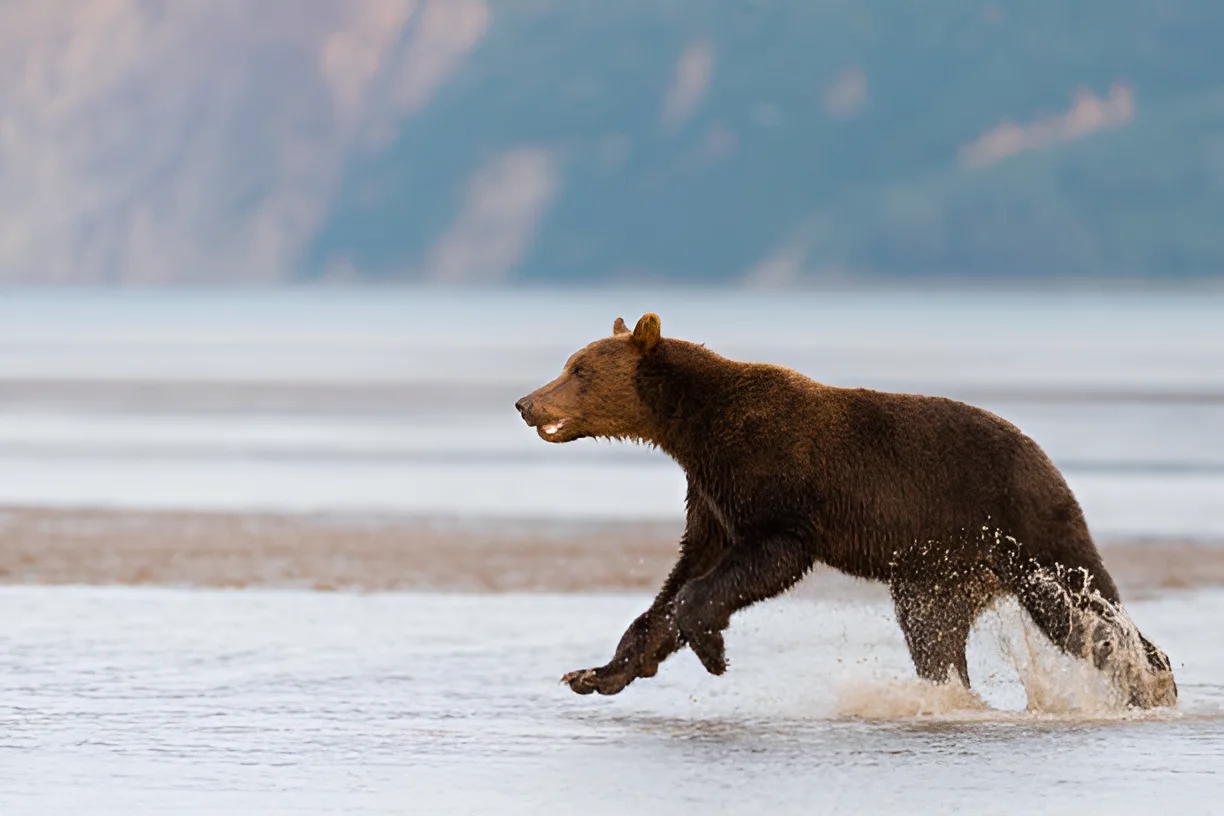No, a dog cannot outrun a bear over long distances, but some breeds may have a speed advantage in short sprints. The question of whether a dog can outrun a bear is one that intrigues many pet owners and outdoor enthusiasts. While dogs are known for their agility and speed, bears possess remarkable strength and endurance. Understanding the dynamics of this potential chase involves examining the speed, stamina, and behavior of both animals. In this comprehensive guide, we will explore the capabilities of dogs and bears, the factors that influence their running abilities, and practical advice for staying safe in bear country.
Speed Comparison: Dogs vs. Bears
To determine if a dog can outrun a bear, we first need to compare their top speeds:
Fastest Dog Breeds: Some of the fastest dog breeds include Greyhounds, which can reach speeds of up to 45 mph, Salukis at 43 mph, and Whippets at 36 mph. These breeds are built for speed with lean, aerodynamic bodies.
Bear Speeds: Bears, despite their size, are surprisingly fast. Black bears can run up to 35 mph, grizzly bears up to 30 mph, and brown bears around 25 mph. Their powerful legs and large muscles enable them to achieve these speeds in short bursts.
While some dog breeds can outrun bears in short sprints, bears have the advantage of maintaining high speeds over longer distances.
Stamina and Endurance
Stamina and endurance play a crucial role in determining whether a dog can outrun a bear over a prolonged chase:
Dog Stamina: The average dog can run at a fast pace for approximately 3-5 miles before needing a break, depending on factors like breed, age, health, and fitness level. Working breeds like Huskies can run much longer distances, but most family dogs have moderate stamina.
Bear Endurance: Bears can sustain speeds between 25-30 mph for short distances and can run steadily for 2-3 miles before tiring. Their large fat reserves and thick fur coat help them maintain energy and prevent overheating.
Overall, bears have greater endurance compared to most dogs, making it difficult for a dog to outrun a bear over long distances.
Agility and Terrain Navigation
Agility and the ability to navigate different terrains are also important factors:
Dog Agility: Dogs are naturally agile and can quickly turn, jump, and weave through obstacles. Their smaller size allows them to fit through tight spaces and navigate rugged terrain with ease.
Bear Power: Bears rely on their raw power and strength to move through dense brush and climb steep hills. While they may not be as agile as dogs, their sheer size and strength enable them to overcome obstacles that might slow down a dog.
In open spaces, a fast and agile dog might be able to evade a bear for a short time, but in dense forests or rough terrain, the bear’s strength and endurance give it an advantage.
Behavioral Considerations
Understanding the behavior of both dogs and bears is essential for assessing the likelihood of a successful escape:
Dog Behavior: Dogs may instinctively chase or bark at bears, which can provoke a defensive response from the bear. Unleashed dogs are more likely to engage with bears, increasing the risk of a dangerous encounter.
Bear Behavior: Bears typically avoid humans and dogs but will defend themselves if they feel threatened. Bears are most likely to attack when protecting their cubs or food sources.
Training your dog to obey commands and stay close to you can help prevent dangerous interactions with bears.
Practical Advice for Staying Safe in Bear Country
When hiking or camping in bear country, it’s important to take precautions to protect yourself and your dog:
- Keep Your Dog on a Leash: Always keep your dog on a leash to prevent them from chasing or provoking bears.
- Make Noise: Make noise while hiking to alert bears to your presence and reduce the likelihood of surprising them.
- Carry Bear Spray: Carry bear spray and know how to use it in case of an encounter.
- Avoid Bear Habitats: Avoid areas where bears are known to frequent, especially during dawn and dusk when they are most active.
- Secure Food: Store food and scented items in bear-proof containers to avoid attracting bears to your campsite.
Conclusion
While some dog breeds can outrun bears in short sprints, bears have the advantage of greater endurance, strength, and the ability to navigate rough terrain. In most cases, a bear would easily outpace even the fastest dog breeds over long distances. To ensure safety in bear country, it’s crucial to keep your dog on a leash, make noise to alert bears, and carry bear spray. By taking these precautions, you can enjoy the great outdoors while minimizing the risk of dangerous encounters with bears.
The photo featured below the post headline is Credit: pchoui/istockphoto
I hope you find this post helpful and informative. If Yes’ feel free to share it with your friends!
Frequently Asked Questions
Can a dog outrun a bear?
No, a dog cannot outrun a bear over long distances, but some breeds may have a speed advantage in short sprints.
What are the fastest dog breeds?
The fastest dog breeds include Greyhounds (45 mph), Salukis (43 mph), and Whippets (36 mph).
How fast can bears run?
Black bears can run up to 35 mph, grizzly bears up to 30 mph, and brown bears around 25 mph.
How can I keep my dog safe in bear country?
Keep your dog on a leash, make noise while hiking, carry bear spray, avoid bear habitats, and secure food in bear-proof containers.
What should I do if I encounter a bear with my dog?
Stay calm, keep your dog close, back away slowly, and use bear spray if necessary. Avoid making sudden movements or loud noises that could provoke the bear.

